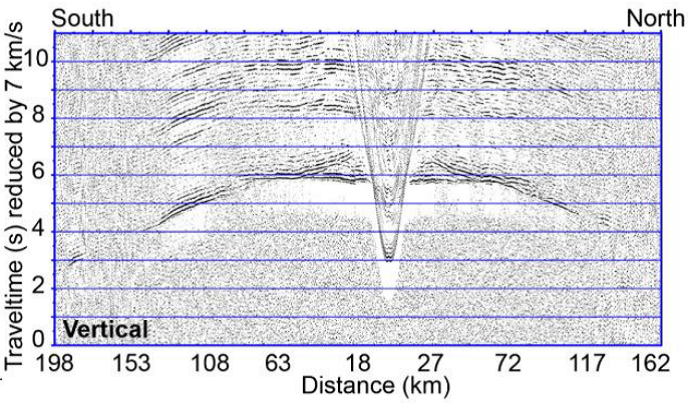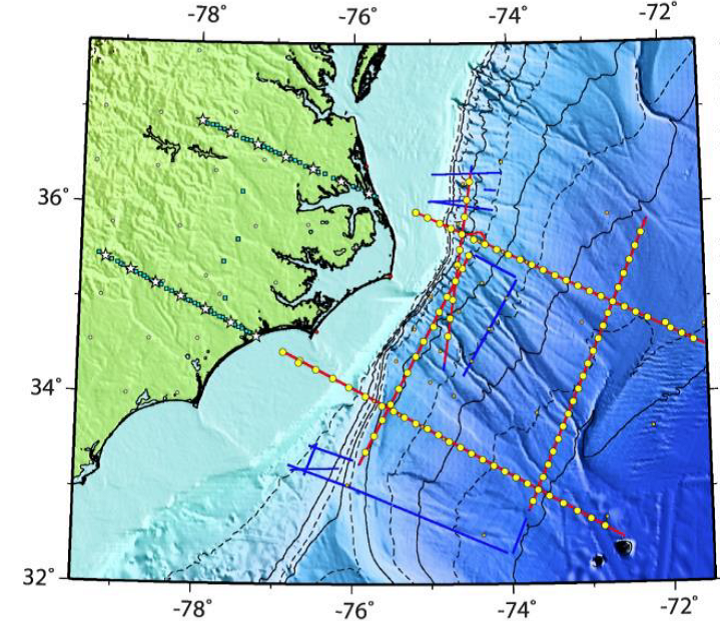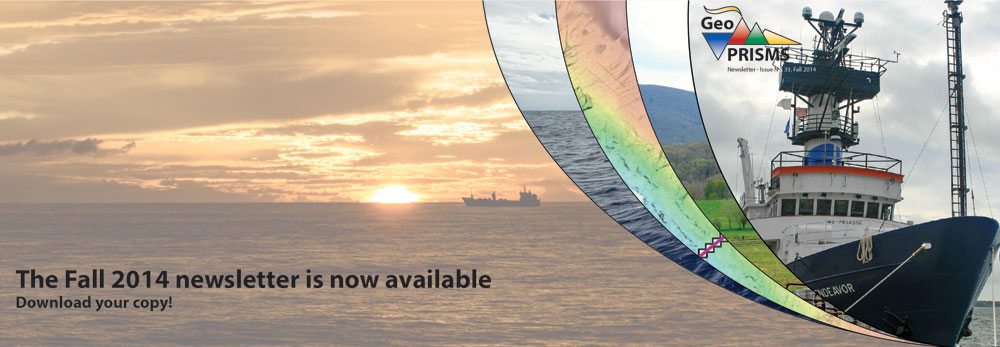In the week of May 18-22, 2015, we will host a 5-day training workshop at the University of Texas in Austin for students and early-career scientists who want to gain experience with the analysis of active-source seismic refraction data. Participants in this workshop will learn how to identify seismic phases, pick arrival times, and invert for crustal seismic velocity structure along geophysical transects. Hands-on learning will be accompanied by lectures explaining the basic assumptions and geophysical theory behind the seismic refraction methods.
In the workshop we will use ocean-bottom seismic refraction data, as well as onshore-offshore seismic refraction data, that were acquired in September and October 2014, during the ENAM Community Seismic Experiment offshore North Carolina. Five geophysical transects of this recent project characterize the rifted margin of the eastern United States. The wide-angle seismic refractions from these data will show the variation in deep structure from the continental crust onshore to ocean crust beneath the abyssal plain.

Example of a marine seismic refraction record

Seismic data acquisition map for the ENAM Community Seismic Experiment. Blue and red lines represent tracks of the R/V Marcus Langseth; yellow circles mark the location of short-period ocean-bottom seismometers.
Interested participants should send a statement summarizing why they wish to attend the workshop, together with a short CV, to gail@ig.utexas.edu. Limited travel funds are available for participants.
Application deadline is March 15, 2015.
For more information, contact the instructors Harm Van Avendonk (harm@ig.utexas.edu) and Gail Christeson (gail@ig.utexas.edu).
Useful links:
The ENAM Community Seismic Experiment project website
——————————————–
The GeoPRISMS Office is now hosted by University of Michigan.
Questions? Contact the GeoPRISMS Office at info@geoprisms.nineplanetsllc.com
www.geoprisms.nineplanetsllc.com
To contribute to the GeoPRISMS Listserv, please send your message to geoprisms-list@geoprisms.nineplanetsllc.com
To unsubscribe or subscribe, please visit: /phplist
GeoPRISMS Logo
powered by phpList 3.0.10, © phpList ltd

